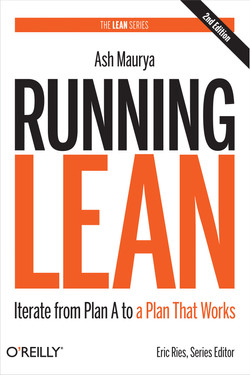
In contrast to the more technical books, I decided to give in an also read something about the business side of things. Luckily, Running Lean comes in at only 240 pages, so it was a quick read. While the book is short, it covered most topics with sufficient depth to get me interested more in the “lean startup” movement. So far, whenever I encountered blog posts about Lean Startups on Twitter or Hacker News, I simply tuned out, thinking that I had no need for their Kool-Aid. However, this book made me change my mind.
I work as an independent contractor and my work is in a really niche market, that being said, that doesn’t mean the products I made don’t have customers nor that I wouldn’t love to have more of them. The book offers very actionable advice on creating a product with a unique value proposition for the right kind of customer segment that solves their problems and that ideally from the start will generate revenue. To this end, throughout the book, the Lean Canvas is used, which is a replacement for the standard business plan or card deck and describes all the important aspects about your business.

While it may not apply directly to your business or product, I suggest you follow the advice quoted in the book
The Advisor Paradox: Hire advisors for good advice but don't follow it, apply it - Venture Hacks
Don’t expect the book to help you magically change your business from a slumbering failure into the next Twitter or Facebook. Instead, use the advice to have a critical look at your business, see what you can improve or should different and move on from there. I know that I certainly need to spend more time away from my desk and more time talking to my (potential) users to figure out what their real problems are.
The best take away message for me was to make sure that features must be pulled, not pushed. I can think up dozens of awesome features that I really think should some day be developed, but at the end of the day, I also need a product that solves real and urgent problems now. So next time when I have to prioritize what feature to develop, I’ll be taking a close look at the workflow of my users before starting to code anything.
So do I recommend this book? Well given its length, I think that every developer, even when you’re not at a startup should take the time to read this book if only to give them some ammo during the next meeting about which features to implement. While this probably isn’t the book about Lean Startups, its definitely a good introduction.
